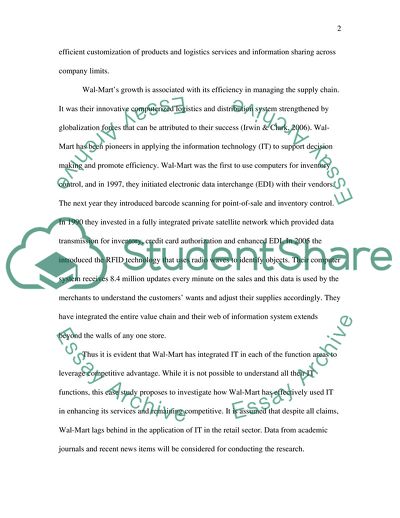Cite this document
(Implementation of IT at Wal-Marts Term Paper Example | Topics and Well Written Essays - 2500 words, n.d.)
Implementation of IT at Wal-Marts Term Paper Example | Topics and Well Written Essays - 2500 words. https://studentshare.org/information-technology/1711541-information-technology-in-the-next-five-years
Implementation of IT at Wal-Marts Term Paper Example | Topics and Well Written Essays - 2500 words. https://studentshare.org/information-technology/1711541-information-technology-in-the-next-five-years
(Implementation of IT at Wal-Marts Term Paper Example | Topics and Well Written Essays - 2500 Words)
Implementation of IT at Wal-Marts Term Paper Example | Topics and Well Written Essays - 2500 Words. https://studentshare.org/information-technology/1711541-information-technology-in-the-next-five-years.
Implementation of IT at Wal-Marts Term Paper Example | Topics and Well Written Essays - 2500 Words. https://studentshare.org/information-technology/1711541-information-technology-in-the-next-five-years.
“Implementation of IT at Wal-Marts Term Paper Example | Topics and Well Written Essays - 2500 Words”. https://studentshare.org/information-technology/1711541-information-technology-in-the-next-five-years.


